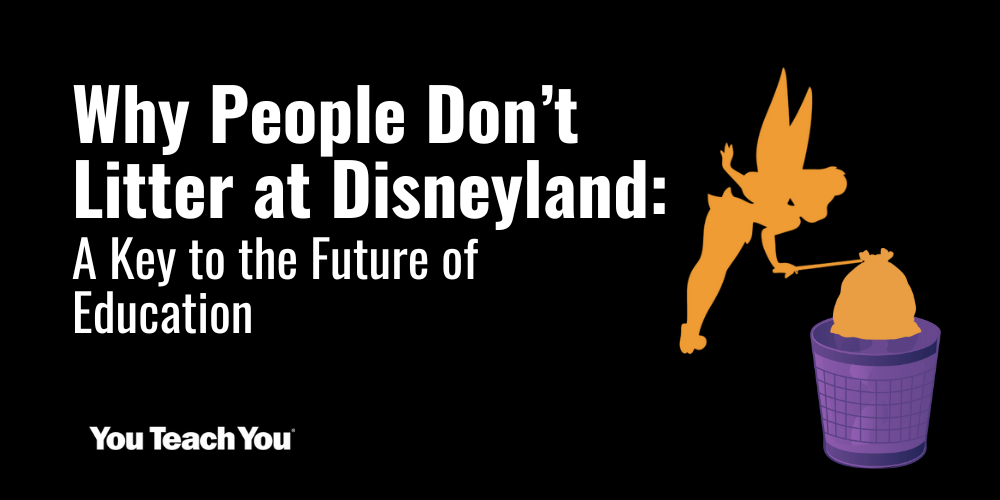The first thing most guests notice when they first visit Disneyland isn’t the horse-drawn carriages, the early 20th century storefronts, or even Sleeping Beauty’s castle; the first thing they notice is how amazingly clean the whole place is. (As Walt Disney himself once remarked, “The thing that’s going to make this place go is clean bathrooms.”)
Now it would be easy to conclude that this is mostly due to the brigade of picker-uppers continuously deployed throughout the park, but as any Disneyland veteran can tell you, this would be incorrect; the reason the park is so clean is because the guests keep it that way. (If I had a dime for every time I’ve seen people pick up after other people at the park, I’d never have to sweat the price of a churro or Mickey pretzel again.)
Why do they do this? Social scientists would point to the broken windows theory, a well-documented concept from criminology that suggests that visible signs of misbehavior and disorder (e.g., litter) often encourage further misbehavior and disorder (e.g., littering). By keeping litter from accumulating, Disneyland keeps people from littering in the first place.
This sounds reasonable, of course, but Walt claimed there was much more to it than that; in his view - and I realize this may sound absurd in this day and age - it’s because people actually want to do the right thing; it’s situations that keep them from doing so. “People are really okay,” he was fond of saying.
This notion seems antiquated and even patently absurd in the age of Twitter and the internet, of course - and yet, every single day at Disneyland, Walt’s faith in the goodness of people, given the right conditions, is rewarded yet again, over and over.
As a teacher, this reality bothered me to no end when I first encountered it at Disneyland years ago. If people could be motivated to pick up other people’s trash on their own, what couldn’t they be motivated to do? Did I have it all backwards? Did my students actually want to be good? Did they actually want to learn? Was the problem that I hadn’t set up the right conditions? Was the problem (gulp) me?
Yes, yes, yes, yes, and yes.
My educational experiments in the years since that day have verified Walt’s insight into human nature over and over again. Treat kids with respect, and they’ll respect you; create a respectful environment and they’ll respect that too. Set up the right conditions for learning, and they’ll learn - all of them, and everything you want them to. And, as incredible as this might seem, this will all happen automatically, as a matter of course; there are no “No Littering” signs at Disneyland.
What are the right conditions? Well I’ll give you a preview of future articles on this subject by once again quoting Walt, this time on how to communicate via entertainment: “You don’t aim above their head, and you don’t aim beneath them. You aim right at them, and then they understand everything and they love you for it.”
Now before the critics pounce and before I let you go, allow me to say that as a lifelong student of all things pertaining to Walt Disney, I’m well aware of his shortcomings as both a businessman and an individual. As a white middle-class kid growing up with “Uncle Walt” in glorious color on the TV every Sunday night, I thought the man could do no wrong; time has quite painfully disavowed me of that notion. But to discard his accomplishments due to his feet of clay would be tragic. His successes were built from seismic insights into human nature - and these successes, regardless of your opinion of the man or corporate entity, are inarguable - and can actually teach us how to solve the age-old problem of education at last (a task Walt was very much interested in by the way; see Donald in Mathmagic Land and Man in Space for examples.)
Want to know how? As Walt himself might have put it on those Sunday nights years ago, stay tuned!

